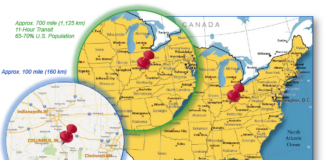
Credit: Courtesy University of San Diego
To solve 21st century technological challenges, society will rely upon today’s undergraduate engineering and computer science programs and their ability to prepare diverse communities of students with professional skills.
With that in mind, the National Science Foundation (NSF) Directorates for Engineering, Computer and Information Science and Engineering, and Education and Human Resources have jointly awarded $12 million to engineering and computer science departments to enact groundbreaking, scalable and sustainable changes in undergraduate education.
The engineering and computer science professions have a large potential to address national priorities and societal grand challenges,” said Pramod Khargonekar, NSF assistant director for engineering. “To flourish in the future, engineering and computer science must attract and retain people from all sectors of society.”
These five-year, $2 million awards are part of NSF’s multiyear effort to help universities substantially improve the professional formation of engineers and computer scientists–the formal and informal processes and value systems by which people become experts in these fields. A key component is support for revolutionizing engineering departments, an NSF activity known as RED.
“An underlying premise of RED is that department heads can be critical levers for change,” said Donna Riley, NSF program director for engineering education research. “RED focuses on transforming department structure and faculty reward systems to stimulate comprehensive change in policies, practices and curricula.”
The RED projects will build upon successful innovations in the introductory and capstone years to improve the entire undergraduate experience, including technical core courses during sophomore and junior years, extracurricular professional activities and student transfer from two- to four-year institutions. The awards also may support faculty development, faculty incentives and inclusive academic cultures.
The RED investment aligns with the NSF-wide undergraduate STEM education initiative, Improving Undergraduate STEM Education (IUSE).
NSF made six RED awards in fiscal year 2015:
- Purdue University mechanical engineering department
- Colorado State University department of electrical and computer engineering
- University of North Carolina at Charlotte computer science department
- Arizona State University Polytechnic School’s department of engineering and manufacturing engineering
- San Diego school of engineering (including departments of electrical, industrial and systems, and mechanical engineering)
- Oregon State University department of chemical, biomedical and environmental engineering
The teams will share ideas and begin forming an RED community at an NSF workshop next month.
NSF plans to call for proposals for RED again in FY 2016.














![[VIDEO] Get More for Your Business in Ardmore. Oklahoma](https://businessfacilities.com/wp-content/uploads/2024/02/maxresdefault-324x160.jpg)
